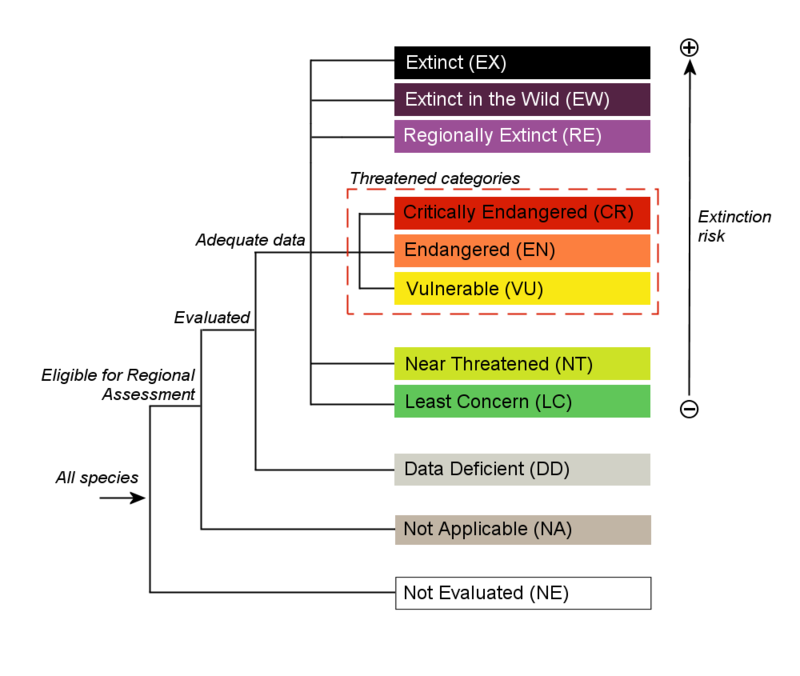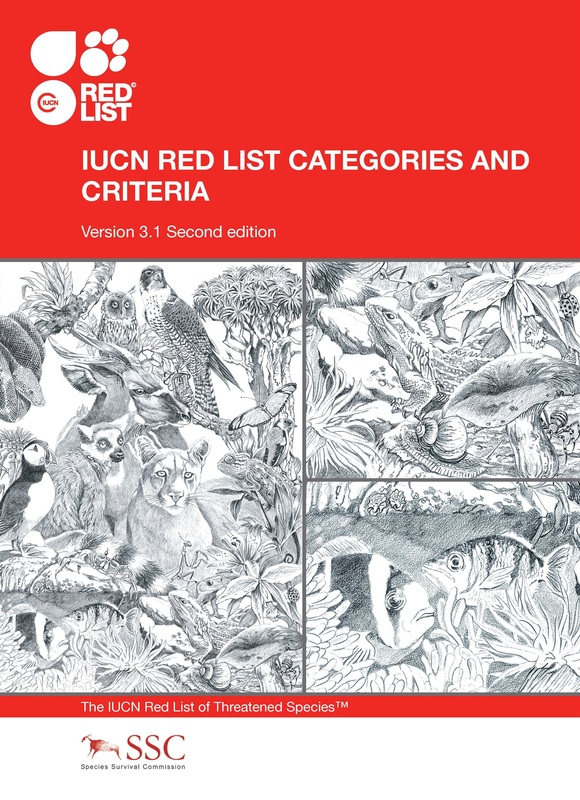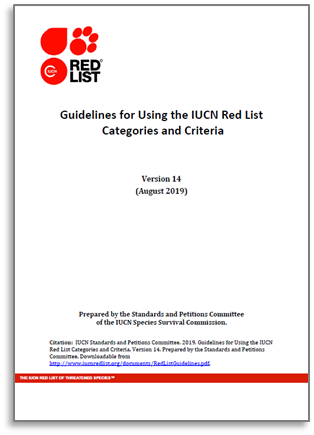IUCN Red List assessments
Laying the foundation for Marine Conservation
IUCN Red List assessments are the foundation of Marine Biodiversity Unit (MBU) initiatives including the Global Marine Species Assessment, Key Biodiversity Areas, and our Global and Regional work. Far more than a list of species and their status, each IUCN Red List assessment provides species-specific information about range, population size, habitat and ecology, use and/or trade, threats, and conservation actions. IUCN Red List assessments are used by government agencies, wildlife departments, conservation-related non-governmental organizations (NGOs), natural resource planners, educational organizations, students, and the business community.
The IUCN Red List Categories are the most accepted and widely used measurement of global threat worldwide at the species level.
Assessments are conducted in a workshop setting that allows the objective review of compiled species-specific data by volunteer scientific experts in the relevant field. At the workshops, experts verify and supplement the information in our database with on-the-ground knowledge that would be nearly impossible to collect and capture any other way. Each species is then assigned to one of nine risk categories using the IUCN Categories and Criteria. The IUCN Red List Categories are the most accepted and widely used measurement of global threat worldwide at the species level.

Nature of the IUCN Red List Categories and Criteria
The IUCN Red List Categories and Criteria are intended to be an easily and widely understood system for classifying species at high risk of global extinction. It divides species into nine categories: Not Evaluated, Data Deficient, Least Concern, Near Threatened, Vulnerable, Endangered, Critically Endangered, Extinct in the Wild and Extinct. Extinct is assigned to species for which there is no reasonable doubt that the last individual has died. Extinct in the Wild means that the taxon is extinct in its natural habitat. Critically Endangered, Endangered and Vulnerable, are assigned to taxa based on quantitative criteria thresholds that are designed to reflect varying degrees of threat of extinction; taxa in any of these three categories are collectively referred to as ‘threatened’. The category Near Threatened is applied to taxa that do not qualify as threatened now but may be close to qualifying as threatened. The category Least Concern is applied to taxa that do not qualify (and are not close to qualifying) as threatened or Near Threatened. The category Data Deficient highlights taxa for which enough information is lacking to make a sound status assessment. The category Not Evaluated applies to taxa that have not yet been evaluated against the Red List Criteria. More information about the IUCN Red List Categories can be found in the IUCN Red List Categories and Criteria: Version 3.1 and Guidelines for Using the IUCN Red List Categories and Criteria: Version 14.
There are five quantitative criteria that are used to determine whether a taxon is threatened or not, and if threatened, which category of threat it belongs in (Critically Endangered, Endangered or Vulnerable). These criteria are based around the biological indicators of populations that are threatened with extinction, such as rapid population decline, or very small population size. Most of the criteria also include sub-criteria that must be used to justify more specifically the listing of a taxon under a category. More information about the IUCN Red List Criteria can be found in the IUCN Red List Categories and Criteria: Version 3.1 and Guidelines for Using the IUCN Red List Categories and Criteria: Version 14.
Following a workshop, the resulting data, including digital distribution maps, is peer-reviewed, published on the IUCN Red List of Threatened Species, and analyzed to identify species and geographical areas of concern. These assessments and analysis form the basis of the MBU’s initiatives, including the Global Marine Species Assessment, Key Biodiversity Areas, and our Global and Regional work.


